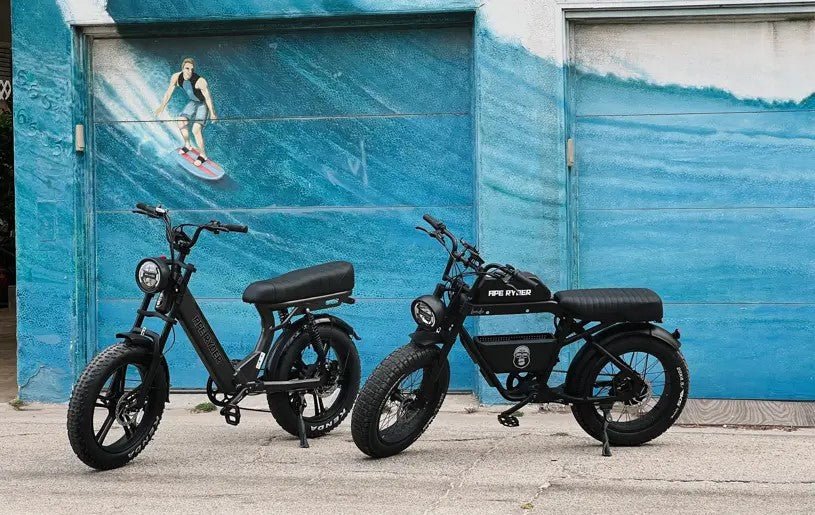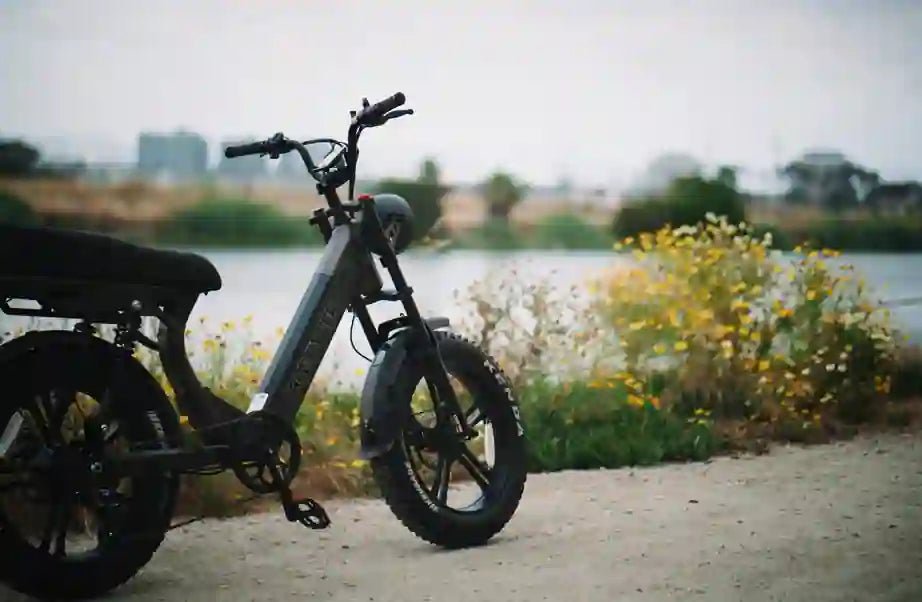Electric bikes are taking over the streets—eco-friendly and full of excitement, all in one go, as one gets outdoors. Now, when it comes to tires for your e-bike, which one should you go for: thin or fat? This guide eases your way through the argument by bringing clarity and thus helping you choose the perfect tire for your riding needs.
Why Tire Choice Matters More Than You Think
How does it impact your riding experience? The tire type affects the speed, handling ease, comfort, and stable ride of the cycle. For the eco-commuter, the right tire can make everyday traveling smooth and productive. Are you an outdoors lover? The perfect tire will make exploration easier for you.
Thin Tires - Speed Demons on Smooth Roads
Notice the thin tires on road bikes and urban e-bikes? These tires are designed for speed and efficiency, so basically only those riding on paved roads and really smooth surfaces benefit from them. Their narrow width keeps their rolling resistance pretty low, thus enabling one to ride at faster speeds with less effort.
What else is the benefit of a thin tire? Its lightweight. With less rubber, the weight is less too, therefore improving the performance of your bike in general. Less rolling resistance and a lower weight can turn your rides into really efficient workouts for fitness enthusiasts.
What are the cons of thin tires? They provide less stability and grip; thus, they are not that perfect for off-road adventures. Thin tires feel unstable on uneven and gravelly surfaces, compromising comfort and safety.
Fat Tires - Stability Kings of Rough Terrains
Fat tires are designed to provide stability and comfort, just the perfect match for the outdoors and those who love adventure. Most common in mountain bikes and all-terrain e-bikes, these wide surface areas with great grip provide good riding on rough and uneven terrains.
Probably one of the biggest advantages associated with fat tires is their shock and vibration absorption. This makes them very useful on rough trails and off-road paths. Are you an eco-commuter dealing with all sorts of surfaces, from city streets to dirt trails? Fat tires have got a versatile solution for you.
What are some of the issues associated with fat tires? Because of the large surface area, they make more rolling resistance and will thus make your bike even more sluggish—eventually harder to pedal. That may be a detriment if you're looking for quickness and efficiency right out of the box. Another disadvantage is added weight from extra rubber, which makes the bike harder to handle and brings down battery life in electric models.
The Perfect Tire for Commuters
For the eco-conscious commuter, the choice between thin and fat tires mostly depends on your daily route. Do you spend most of your time riding on smooth, paved roads? Thin tires might be exactly what you need for speed and efficiency to help get you to work a little quicker and make the overall commute much more enjoyable.
What if, however, you have a route that will include such things as gravel paths or rough ground? In that case, you may be more suited to fat tires. Their stability and shock-absorbing capabilities can make your ride easier and safer.
Adventure Seekers - Thick or Thin?
Bikers often find themselves experiencing very different terrains while out in the woods; for instance, these could either be full of rocks or filled with mud. In such a case, fat tires turn out to be the wise course of action to choose. And why not, with a wide surface area, it literally makes a perfect grip to take care of the difficult terrains. Add to this the great comfort that is through the shock absorption to make the long rides more bearable.
However, if these adventures of yours are leaning toward speed rather than being necessarily rough, the thin tires are a must. They will give you an advantage of speed and efficient service, which would be very convenient for some outdoor activities.
Fitness Seekers - Maximizing Your Workout
Next, for the fitness enthusiast, the distinction between thin and fat tires is very critical. If you wish to burn innumerable calories to get into perfect shape, improve your cardiovascular health, and allow for greater momentum, then thin tires are more likely to provide these appealing results.
On the other hand, would you like a tougher workout that would help with muscle endurance? This is effective because it offers more resistance pulling the weight of the fat tires, thus requiring much more effort while pedaling over rough terrains. For individuals who wish to gain some muscle and work out a bit, this will help move better.
Sustainability and Eco-Friendliness
Your tire choice, in the quest for sustainability, does matter. Are you taking into consideration ecological effect? Thin tires are light, need less material, and hence relatively behave gently on the environment. They are relatively efficient and so help reduce the energy that has to be put out from an e-bike.
Fat tires, on the other hand, bring in their advantage of durability and can last much longer than skinny tires. Many of them are puncture-resistant and need fewer replacements. It is in this balancing of factors—efficiency and material use versus durability and longevity—that eco-conscious riders can start to make choices that fit their values a little better.
Performance in Different Weather Conditions
The weather conditions can also affect your choice of tire. Do you usually ride in dry conditions? Thin tires roll well; they have low rolling resistance and offer great speed with relative efficiency. In wet or icy conditions, though, they can let you down a bit because again, grip and stability become more important than outright speed.
Fat tires perform better in inclement weather. The large surface area allows for more grip on wet, icy, or snowy surfaces, which makes them more secure for all-weather riders by providing stability and control in situations hard to bear
Maintenance and Longevity
Maintenance is one more thing to be discussed. Do you prefer easily maintained stuff? Generally, thin tires are easier to clean and cause less debris to collect due to having a much smaller surface area. At the same time, they are more prone to punctures, so maybe they need more repair or replacement.
Fat tires can be more difficult to maintain than standard tires, which are more wear-resistant. So, with the larger surface area, they tend to collect more debris and, thus, need a lot of cleaning in most cases. However, being more durable and puncture resistant, there are less frequent replacements.
Cost Considerations
Cost is also a consideration for any buyer. Are you on a tight budget? Well, thin tires are relatively cheap to buy and maintain. They can help in reducing energy bills due to their efficiency; thus, they are rather cost-effective for most cyclists.
Yes, fat tires are worth your money if you need durability and versatility. Running through all diverse kinds of terrains or various climatic conditions may actually be saving your money in the long run, especially when you have ridden much through harsh environments.
Our web site, or simply reach out to our expert team for a recommendation tailored to your needs. We're here to get you riding on the right tire and take your e-bike experience to the next level. Happy riding!









Leave a comment
All comments are moderated before being published.
This site is protected by hCaptcha and the hCaptcha Privacy Policy and Terms of Service apply.